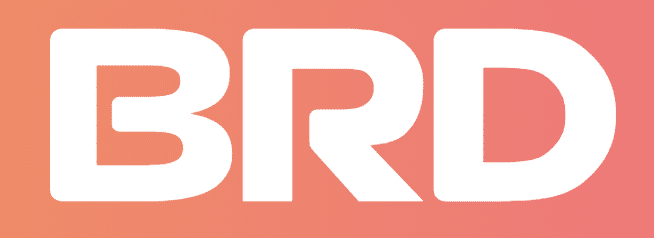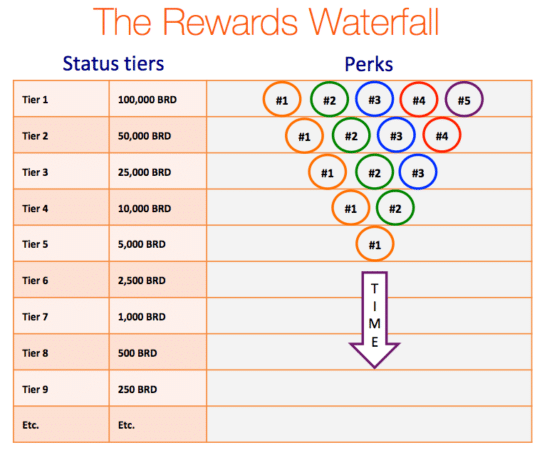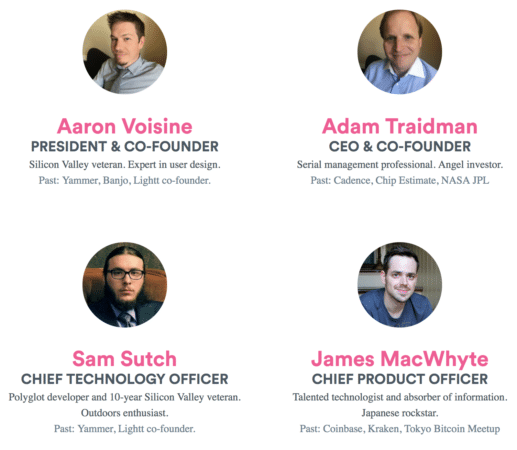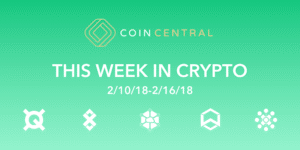- What is the Bread Token?
- Bread Wallet
- Accessibility
- How does the Bread token work?
- Bread Team and Progress
- Trading History of Bread Token
- Where can you buy Bread Token?
- Where can you store Bread Token?
- LoafWallet
- Conclusion
- Additional Resources
What is the Bread Token?
The Bread Token (BRD) provides discounts and additional services when using the popular Bread wallet app. Bread is the first cryptocurrency wallet to provide a loyalty and customer rewards program. In the competitive cryptocurrency wallet market, Bread has acquired over 650,000 customers in over 150 countries. The next step is incentivizing people to stay inside the Bread ecosystem.
Bread Wallet
The Bread wallet is a free iOS or Android download and easy to set up. There is no registration or personal information collected during the setup process. Upon downloading the app you can import a Bitcoin wallet or create a new one. If you create a new wallet, you’ll be provided with a paper key, “a list of 12 words that can be used to restore access to your wallet if you ever lose or upgrade your phone.” If you decide to later use a different wallet, the 12 words can be used to generate your private key and you’ll still be able to recover your Bitcoins. The keys are only accessible from your device so you won’t have to worry about Bread getting hacked.
The simple user interface has options for sending and receiving Bitcoins. In the menu option, for certain countries, there is the ability to buy Bitcoin directly from the Bread app.
When sending, you can choose between paying ‘regular’ or ‘economy’ network fees. The regular fees should confirm you transaction within an hour while the economy fee should confirm your transaction within 24 hours, depending on the level of traffic on the Bitcoin network.
Bread wallet is what we consider a hot wallet, in that it is connected to the internet and is useful if you plan on frequently moving Bitcoins around. For long-term, more secure, storage of your Bitcoins, you should consider cold storage such as the Ledger Nano S.
Accessibility
The ultimate goal of Bread is to build a decentralized bank. Just as Airbnb doesn’t own any hotels and Uber doesn’t own any cars, Bread doesn’t actually hold any of your money. They are simply facilitating the sending and receiving of your money. The company is headquartered in Zurich but provides services for users all around the world.
Bread will partner with a variety of financial services institutions to allow for the “buying and selling of Bitcoin, direct deposit of wages into Bitcoin, payment of bills, buying and selling of tokens, tracking ROI of crypto assets, etc. Bread is aiming to reduce customer’s dependence on traditional fiat based banks and move them to the world of decentralized banking.”
Rather than try and set up in each country and become legally compliant, Bread simply partners with established third parties in different countries. “If you open your Bread in Japan, you will be given access to local exchanges and services that are legally compliant and serve customers in Japan. If you travel to Germany and open your Bread there, you will see the services that are available for use in that region.”
In certain countries, Bread is able to deliver up to $20,000 of Bitcoin per day and $50,000 per month. It is worth noting though that while the basic features of the BRD wallet are used anonymously, purchasing from these third parties will require some personal information.
How does the Bread token work?
The Bread token, BRD, launched December 2017. It is somewhat similar to the Binance coin which allows for cheaper transaction fees on the Binance exchange. The BRD token will allow for discounts and additional services within the Bread app. For example, if buying Bitcoin through the app incurred a 5 dollar fee, users might be given the option to pay just 3 dollars when using BRD tokens. Simply holding BRD will also come with benefits in the future.
There are 88,862,718 BRD tokens in existence with roughly ⅔ distributed through a presale and crowdsale. 32 million dollars were raised in these sales at a price of 900 BRD per 1 ETH.
There will be several different ways to earn the remaining ⅓ of BRD. Posting about BRD on social media, answering surveys, or simply holding a certain amount of BTC in the Bread wallet could all result in receiving free BRD in the future.
In a typical customer rewards system, you earn more points and thus earn more rewards. However, with a fixed supply of BRD tokens, eventually, the top tier perks would become unachievable. Bread is hoping to solve this through a ‘Rewards Waterfall.’
Over time, there will be new reward tiers as coins become harder and harder to acquire. One of the proposed rewards for BRD holders is access to personalized customer service. A rarity in the cryptocurrency space, users would be able to call an actual person for customer support.
Bread Team and Progress
Bread, formerly known as Breadwallet, was founded in 2015 by Aaron Voisine and Adam Traidman. It was the “first standalone iOS Bitcoin wallet” and has grown to 15 employees.
Moving forward, the BRD team wants to allow both the buying and selling of Bitcoin through the app in different countries. There will also soon be support for Ethereum and ERC20 tokens. Possibly the most exciting feature would be the ability to purchase new ICOs through the Bread app with the BRD tokens. Below is their aggressive roadmap moving towards the end game of becoming the world’s decentralized bank.
Trading History of Bread Token
It should come as no surprise the price of BRD is highly correlated to the price of BTC. Not only do most coins share this correlation, but the BRD token is tied directly to an app utilizing Bitcoin. However, the long-term value of BRD will depend on utility. If the Bread team is able to deliver on perks and discounts for BRD holders, you would expect an increase in price given the fixed supply of BRD.
Where can you buy Bread Token?
“Various promotions, contests, and giveaways are in the planning stages” to distribute BRD tokens. However, if you want to trade for some today, the vast majority of the trading volume takes place on Binance.
Where can you store Bread Token?
Since BRD is an ERC20 token, you can store it on MyEtherWallet. There is also currently a signup for Bread Beta here that allows you to store Ethereum and BRD directly in your Bread wallet.
LoafWallet
One of the Bread advisors is the founder of Litecoin, Charlie Lee. Since the Bread wallet is open source, the Litecoin team decided to fork the code and create the LoafWallet for Litecoin. The Litecoin Foundation currently maintains the code for the popular LoafWallet. Unfortunately, there is no Loaf token as of yet. However, with Litecoin’s high transaction volume and recent progress in becoming the payment coin, the idea of Loaf tokens could be the greatest invention since sliced… well, Bread.
Conclusion
Bread’s idea of a decentralized bank is ambitious but appealing. From the BRD whitepaper:
“Traditional financial platforms have many weaknesses and single points of failure. Banks and investment firms are subject to embezzlement, mismanagement of funds, and occasionally complete insolvency which leads to catastrophic results. Credit card companies have costly overhead and choose to distribute loss due to fraud to all customers equally, which means diligent, careful customers are paying for the mistakes of those more careless.”
If you already plan on using the Bread app, you may want to look into acquiring the BRD token to save money and enhance your user experience. As we have already seen with the success of exchange specific coins, the BRD token might pave the way for a multitude of wallet specific tokens.
Additional Resources
Never Miss Another Opportunity! Get hand selected news & info from our Crypto Experts so you can make educated, informed decisions that directly affect your crypto profits. Subscribe to CoinCentral free newsletter now.



















